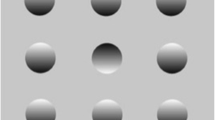Abstract
I present a novel argument against the epistemic conception of perception (ECP) according to which perception either is a form of knowledge or puts the subject in a position to gain knowledge about what is perceived. ECP closes the gap between a perceptual experience that veridically presents a given state of affairs and an experience capable of yielding the knowledge that the state of affairs obtains. Against ECP, I describe a particular case of perceptual experience in which the following triad of claims is true: (i) The experience presents a given state of affairs (it has propositional content); (ii) The experience is veridical; (iii) The experience cannot yield the knowledge that the state of affairs obtains (even in the absence of relevant defeaters). This case involves an empirically well-studied phenomenon, namely perceptual hysteresis, which involves the maintenance of a perceptual experience with a relatively stable content over progressively degrading sensory stimulations.

Similar content being viewed by others
Notes
Although perceptual hysteresis in such an experiment is typically quite high, it may vary across subjects. For some indication that perceptual hysteresis is significantly higher in schizophrenia (and especially for hallucinatory patients), see Martin et al. (2014), which adapts Kleinschmidt et al. (2002)’s paradigm to the auditory case.
For discussion, see Engel (2007, Chap. 3) and Dokic and Égré (2009). Roughly speaking, a belief is safe only if its content is true in all nearby worlds (see Williamson 2000, pp. 147–149). On an alternative definition, a belief is safe only if the method that produced it does not produce a false belief in any nearby world (see Sainsbury 1996).
In the study of Martin et al. (2014), 40 % of schizophrenic patients report hearing the signal when the signal-to-noise ratio has gone down to \(-\)30 db. At this point, they clearly have auditory hallucinations, perhaps even “non-veridical” ones in Lewis’s sense (although the signal is still physically there, it is much below the normal threshold of audition).
See for instance what Bernecker (2009, Sect. 3.2) calls “the principle of continuous justification”.
References
Barthelmé, S., & Mamassian, P. (2010). Flexible mechanisms underlie the evaluation of visual confidence. Proceedings of the National Academy of Sciences, 107(48), 20834–20839.
Bernecker, S. (2009). Memory: A philosophical study. Oxford: Oxford University Press.
Dokic, J. (2014). Feelings of (un) certainty and margins for error. Philosophical Inquiries, 2(1), 123–144.
Dokic, J., & Égré, P. (2009). Margins for error and the transparency of knowledge. Synthese, 166(1), 1–20.
Dretske, F. (1969). Seeing and knowing. Chicago: The University of Chicago Press.
Engel, P. (2007). Va Savoir !. Paris: Hermann.
Evans, G. (1982). The varieties of reference. Oxford: Clarendon Press.
Kleinschmidt, A., Buchel, C., Hutton, C., Friston, K. J., & Frackowiak, R. S. (2002). The neural structures expressing perceptual hysteresis in visual letter recognition. Neuron, 34, 659–666.
Large, M.-E., Aldcroft, A., & Vilis, T. (2005). Perceptual continuity and the emergence of perceptual persistence in the ventral visual pathway. Journal of Neurophysiology, 93, 3453–3462.
Lewis, D. (1980). Veridical hallucinations. Australasian Journal of Philosophy, 58, 239–249.
Martin, J.-R., Dezecache, G., Pressnitzer, D., Nuss, P., Dokic, J., Bruno, N., Pacherie, E., & Franck, N. (2014). Perceptual hysteresis as a marker of perceptual inflexibility in schizophrenia. Consciousness and Cognition, 30, 62–72.
McDowell, J. (1994). Mind and world. Harvard: Harvard University Press.
McDowell, J. (1998a). Criteria, Defeasibility, and Knowledge. In Meaning, knowledge, and reality (pp. 369–394). Harvard: Harvard University Press.
McDowell, J. (1998b). Knowledge by Hearsay. In Meaning, knowledge, and reality (pp. 414–443). Harvard: Harvard University Press.
McGinn, C. (1999). The concept of knowledge. In Knowledge and reality. Selected essays (pp. 7–35). New York: Oxford University Press.
Sainsbury, M. (1996). Vagueness, ignorance and margin for error. British Journal for the Philosophy of Science, 46, 589–601.
Williamson, T. (2000). Knowledge and its limits. Oxford: Oxford University Press.
Acknowledgments
Thanks to two anonymous referees of this journal, and to Pascal Engel for stimulating ongoing discussions on knowledge. This work has been supported by the following two grants: ANR-10-LABX-0087 IEC and ANR-10-IDEX-0001-02 PSL.
Conflict of interest
There are no conflicts of interest with respect to the present paper.
Author information
Authors and Affiliations
Corresponding author
Rights and permissions
About this article
Cite this article
Dokic, J. Knowledge, perception, and the art of camouflage. Synthese 194, 1531–1539 (2017). https://doi.org/10.1007/s11229-015-0758-5
Received:
Accepted:
Published:
Issue Date:
DOI: https://doi.org/10.1007/s11229-015-0758-5



